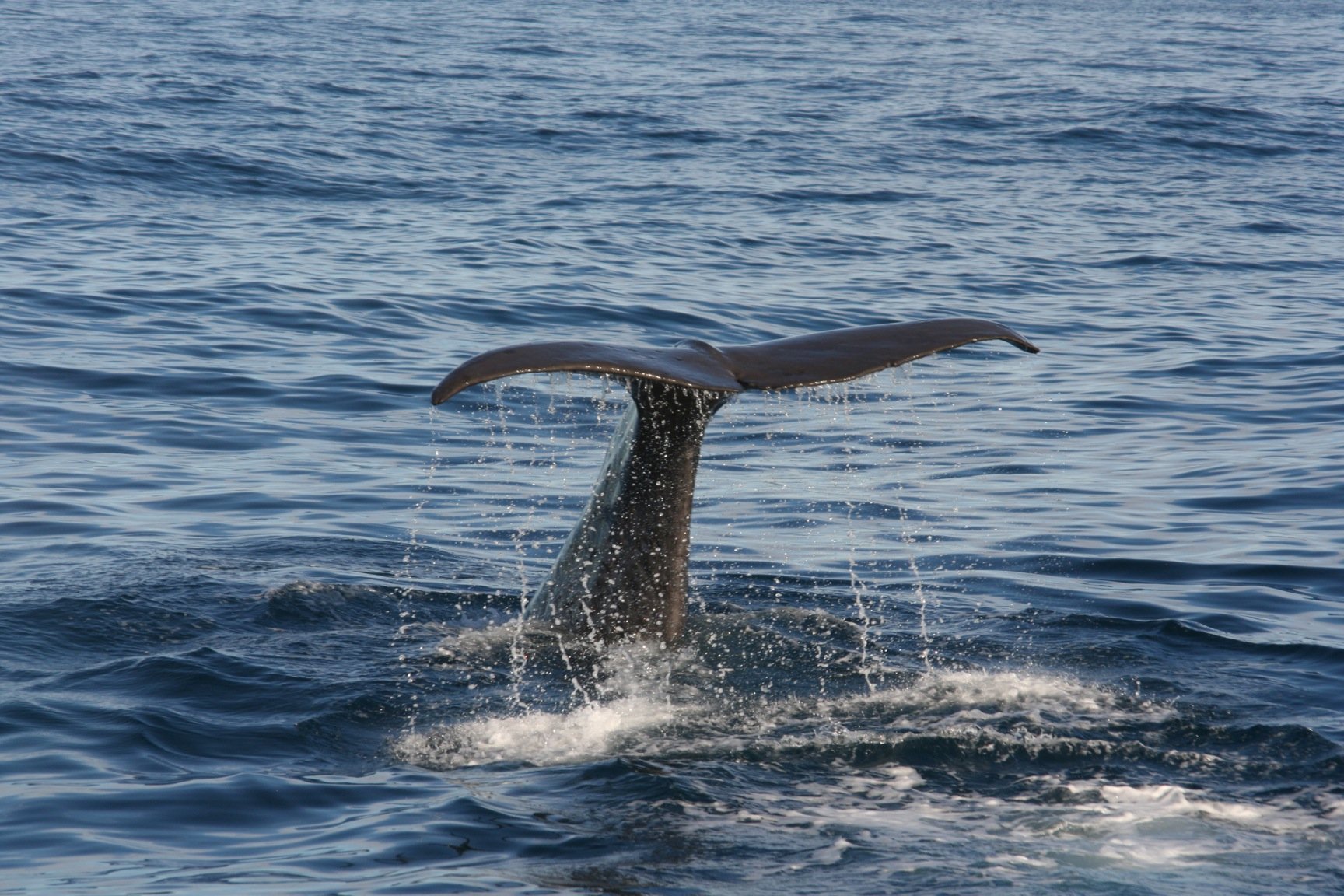
I have raved on and on about how Kaikoura is the best place in the world to see albatrosses, but the once sleepy seaside town is not actually famous for these magnificent birds. What put this once small fishing town on the map was not birds but mammals, specifically whales and dolphins. Being a convenient stop between the ferry town of Picton and the city of Christchurch didn’t hurt, but it was the chance to get up close and personal with marine mammals that turned the place into a popular tourist destination.
The reason Kaikoura is such a great place to see albatrosses and whales is one and the same, and the same reason indeed that Monterrey in California is a great place to watch whales and albatross. Just offshore is the Kaikoura Canyon, a marine crevasse that means you can quickly pass over water that is a thousand metres deep. This makes the waters massively productive, which attracts fishermen and marine life close to the shore, where it can be watched without hours spent reaching the continental shelf.
The star of Kaikoura is the Sperm Whale, (Physeter macrocephalus). The Sperm Whale is the fourth largest whale, and the largest toothed whale (and animal) in the world. It has a cosmopolitan distribution in the world’s oceans, but is generally found only in waters deeper than 1000 metres, and for a tourist those kinds of waters are hard to come by casually. But they are astonishingly consistent in the deep waters off Kaikoura, making it the place in the world where you can almost be guaranteed to see them.
The star of the show at Kaikoura is apparently not a bird.
And people do go to see them. Whale Watch Kaikoura has five modern fast boats to go out to see them, and all five of them were going flat out on Easter Saturday to take people out to see them. Our check in time was 7:45 and as we arrived the group before us was being prepped, and they weren’t even the first group. It was a well oiled machine, quite unlike the majority of whale watching trips I have been on in the past. There was a safety briefing in their centre before the ride to the boat, a handsome and powerful cat with rather luxurious leather seats that would not have looked out of place on a jet (rather more comfortable as well!). And we were off, going great guns to get as far out into the trench as possible. As we shot out into the ocean we received a lecture on the Kaikoura Canyon, its wildlife and the Sperm Whale from Hayley, a local girl who was our guide. To my ears the talk was actually pretty damn good, informative without being either patronizing or overly technical and dry.
I always seem to see Kaikoura at dawn.
The trick to finding Sperm Whales lies in their biology, we learned. Sperm Whales feed deep, diving to the bottom of the trench, hunting for a while, then rising again to catch a breath. Of course, given the distances, this takes time, and the whales spend up to an hour under the water feeding. Having spent an hour under the water it takes them ten minutes at the surface to fully replenish their oxygen in their body before taking another time, so unlike baleen whales which are continuously moving as you watch them once you’ve found a Sperm Whale it will stay put for a while. It also helps that when the whales are feeding in the black abyss they use sonar (a sonar so powerful it could kill you at full volume), so if a whale is around but not at the surface it is possible to triangulate where it is and work out where it will eventually emerge. Throw in multiple boats out there one after another and it is hardly surprising that the team has a such a huge success rate in finding these creatures.
For a hardcore birder the trip might have been a touch disappointing. The boat moves quickly past interesting things; Northern Giant Petrels, Buller’s Shearwaters, White-capped Albatrosses, New Zealand Fur Seals (I understand they will pause to see dolphins). And once we stopped to look for the whale these birds and other mammals didn’t come too close, although you can certainly see flybys by fantastic birds like Northern Royal Albatrosses and Westland Petrels. But they don’t come and sit next to the boat. That said, no birder would ever come to Kaikoura and do the whale trip without planning to do an albatross one as well, so it isn’t worth getting knotted up about. You almost certainly won’t see a Sperm Whale out with the albatross crew, but the trip is still utterly essential as well.
Because damn if the Sperm Whale isn’t worth seeing. Ours popped up not 200 metres from the boat (a testament to how well our skipper triangulated it), and we were soon close enough to have a really long look at the thing. And damn it was big.
The single blowhole of the Sperm Whale always points to the left, and the sideways spray makes them a distinctive sight at sea.
Unlike the baleen whales the blowhole of the Sperm Whales is located at the front of the body.
Even here the smoothness of Whale Watch Kaikoura’s operation didn’t falter. So predictable are the whales that they were able to predict around when the whale would dive, maneuvering the boat around so as to make it easy to line up the perfect fluke shot.
And down into the darkness for another hour or so.
And then back to Kaikoura, with more interesting Sperm Whale facts, like that only males feed in Kaikoura, as they build up strength growing up before trying to mate with females in the tropics as an adult. After which a breakfast/lunch before heading out for albatrosses.
It has taken me many years to do a whale watch trip here, but now that I have I can say without reservation that it is worthwhile. Think of it as one of many reasons to drop by Kaikoura, the best place in the world to see both albatrosses and Sperm Whales.


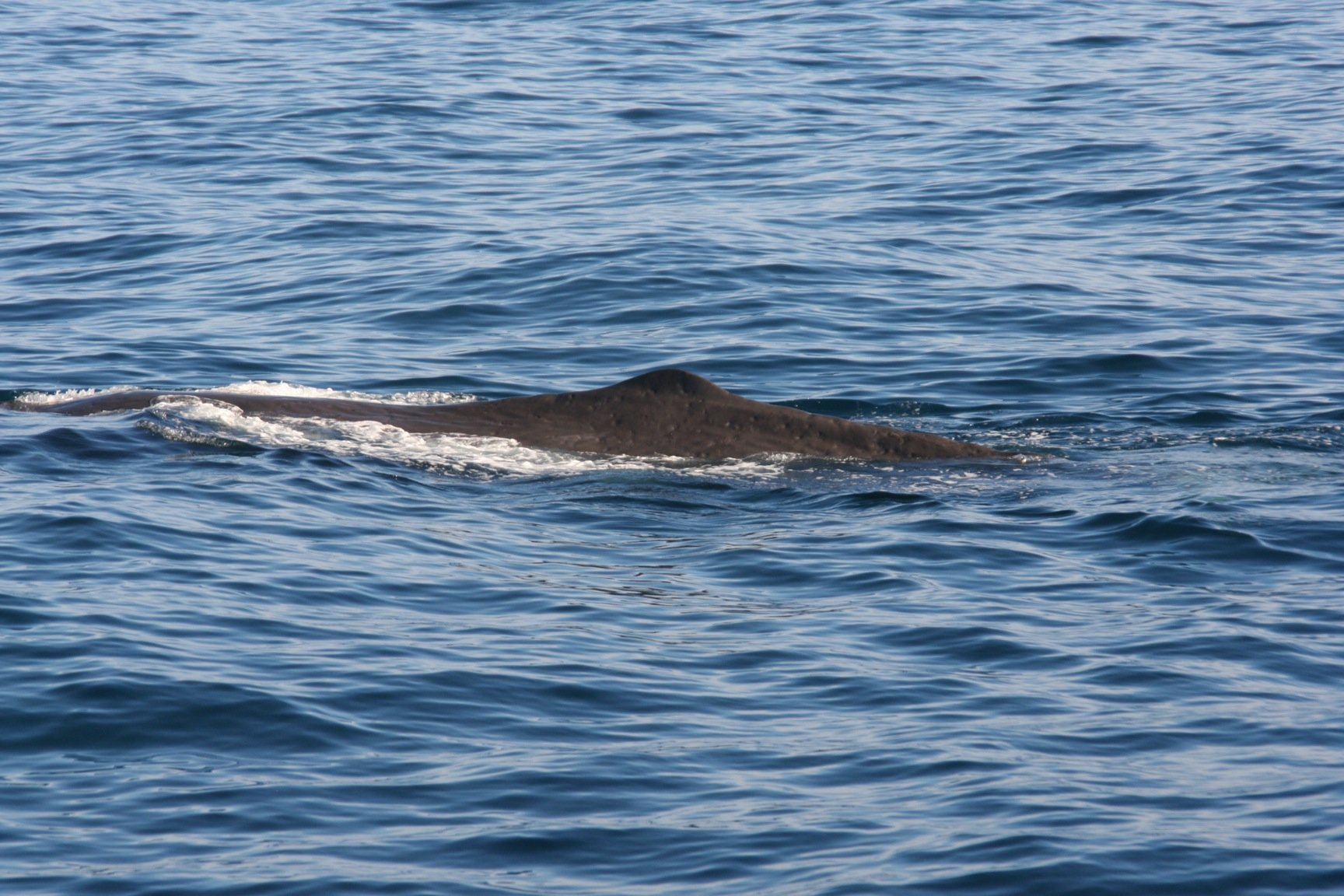
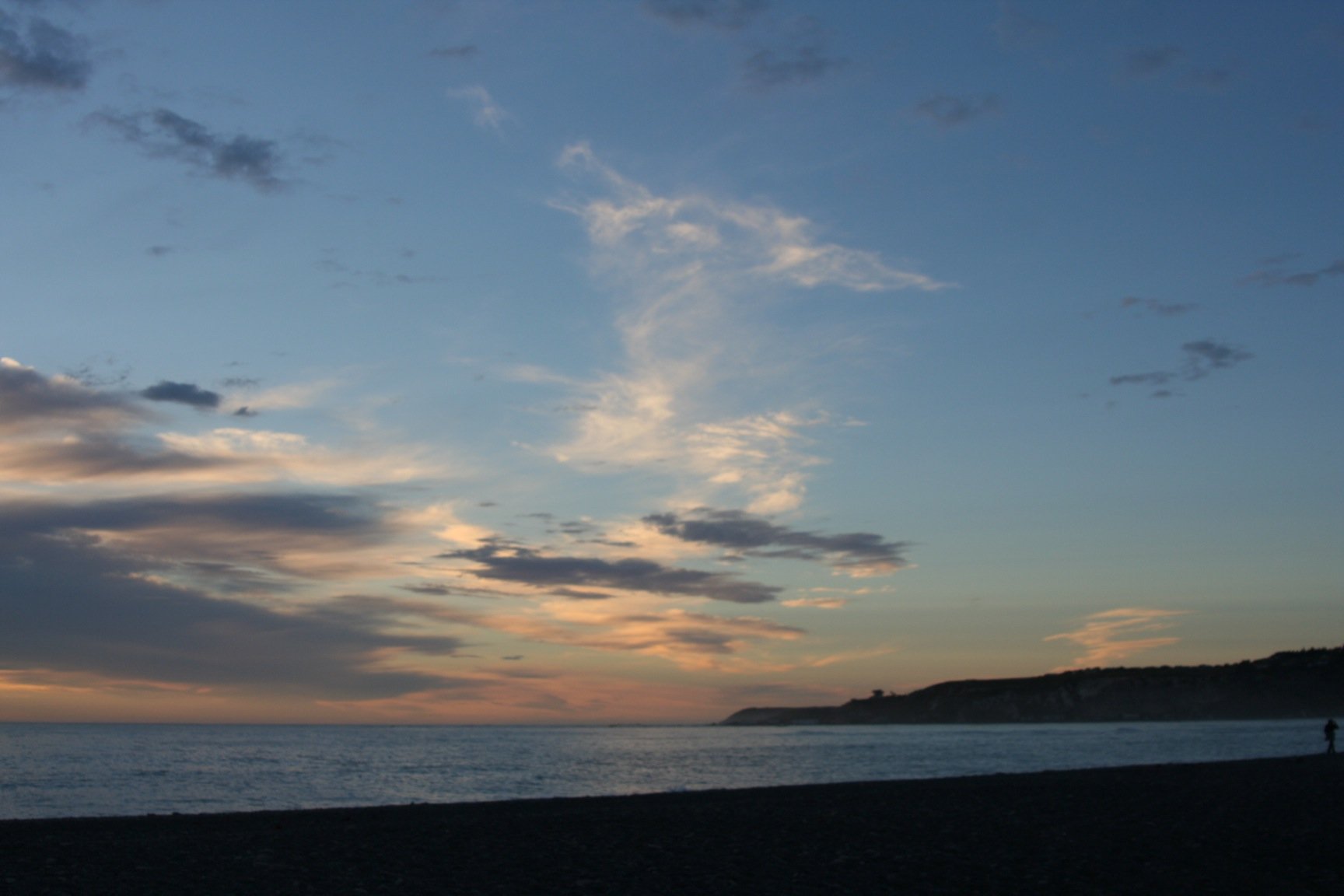
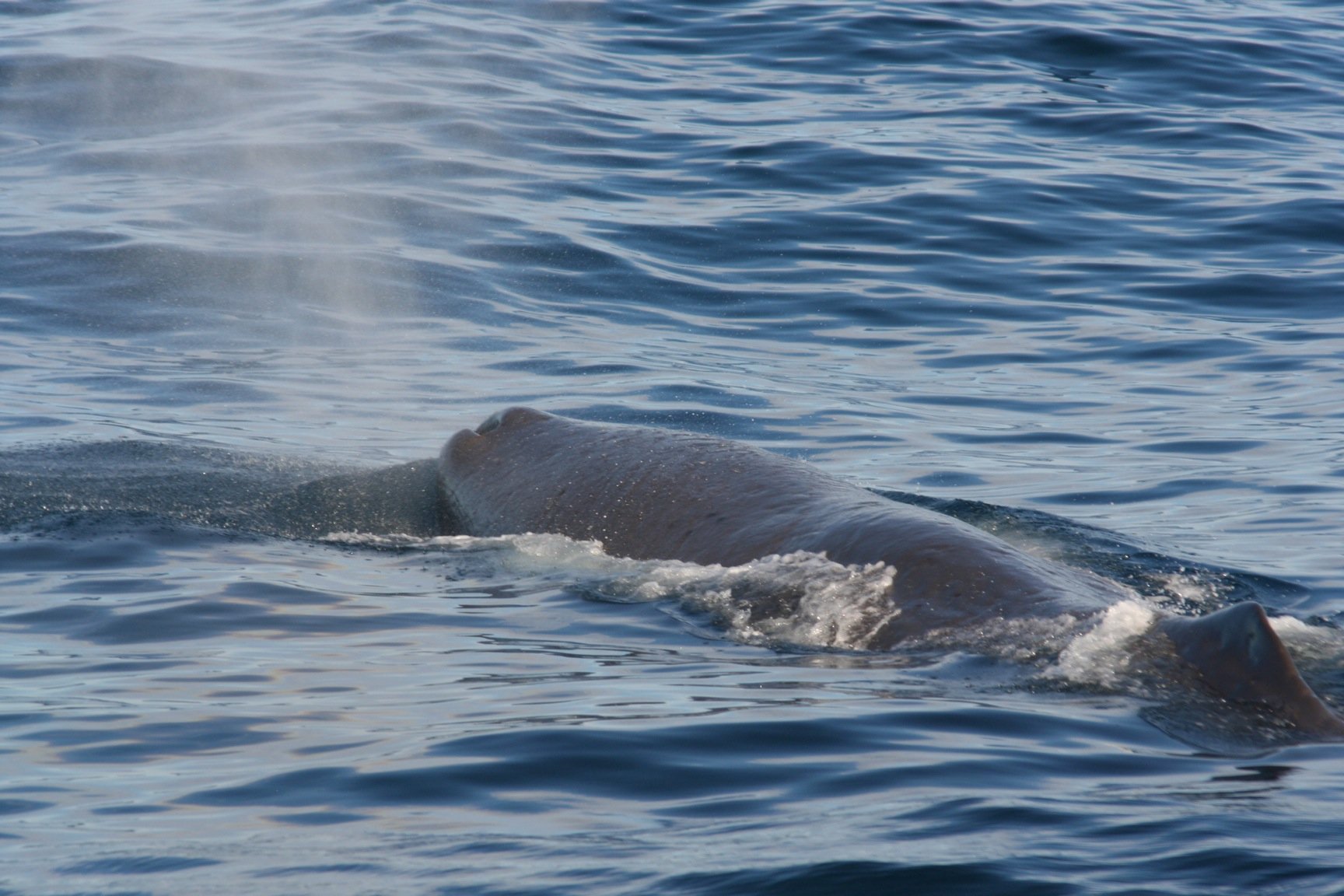
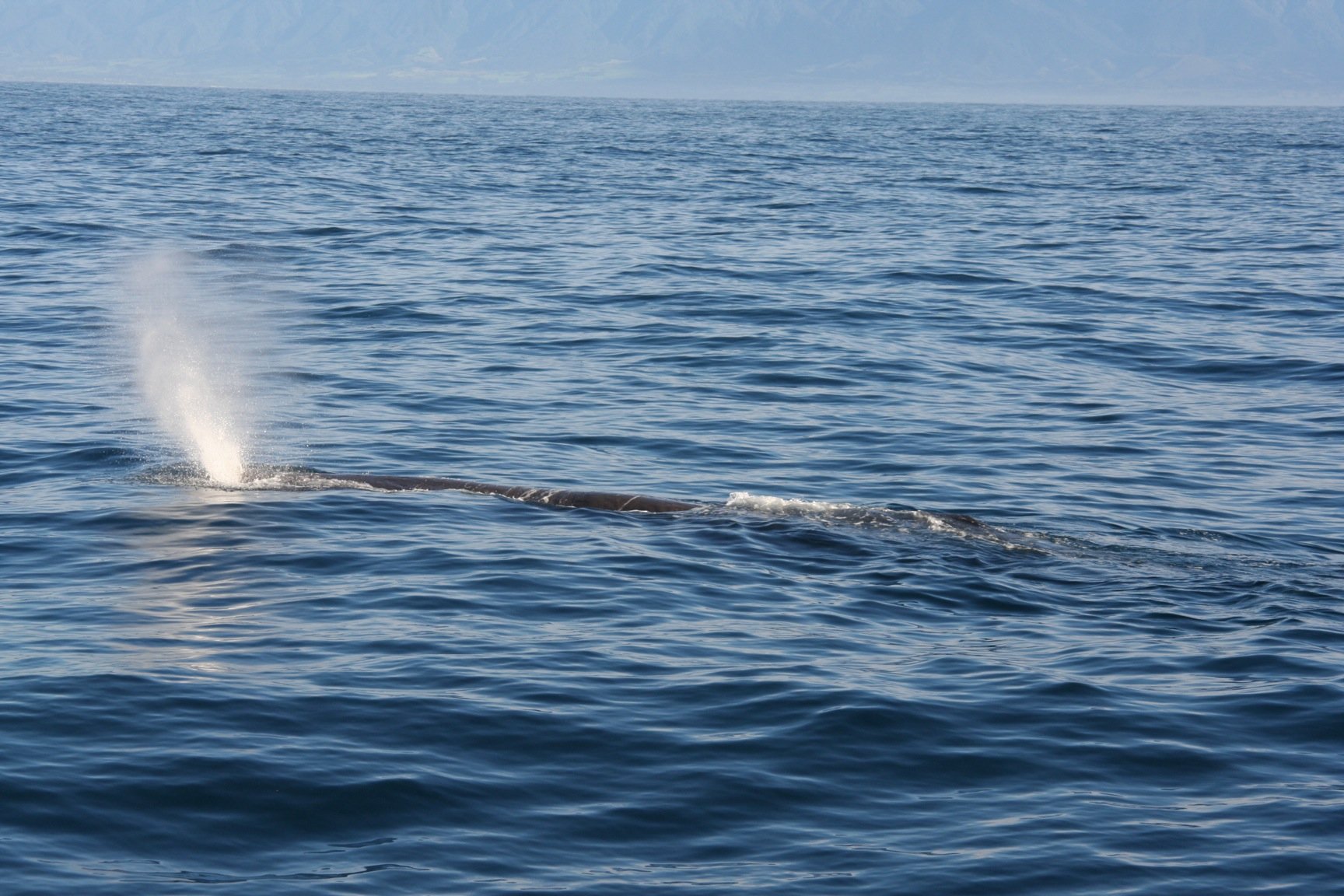
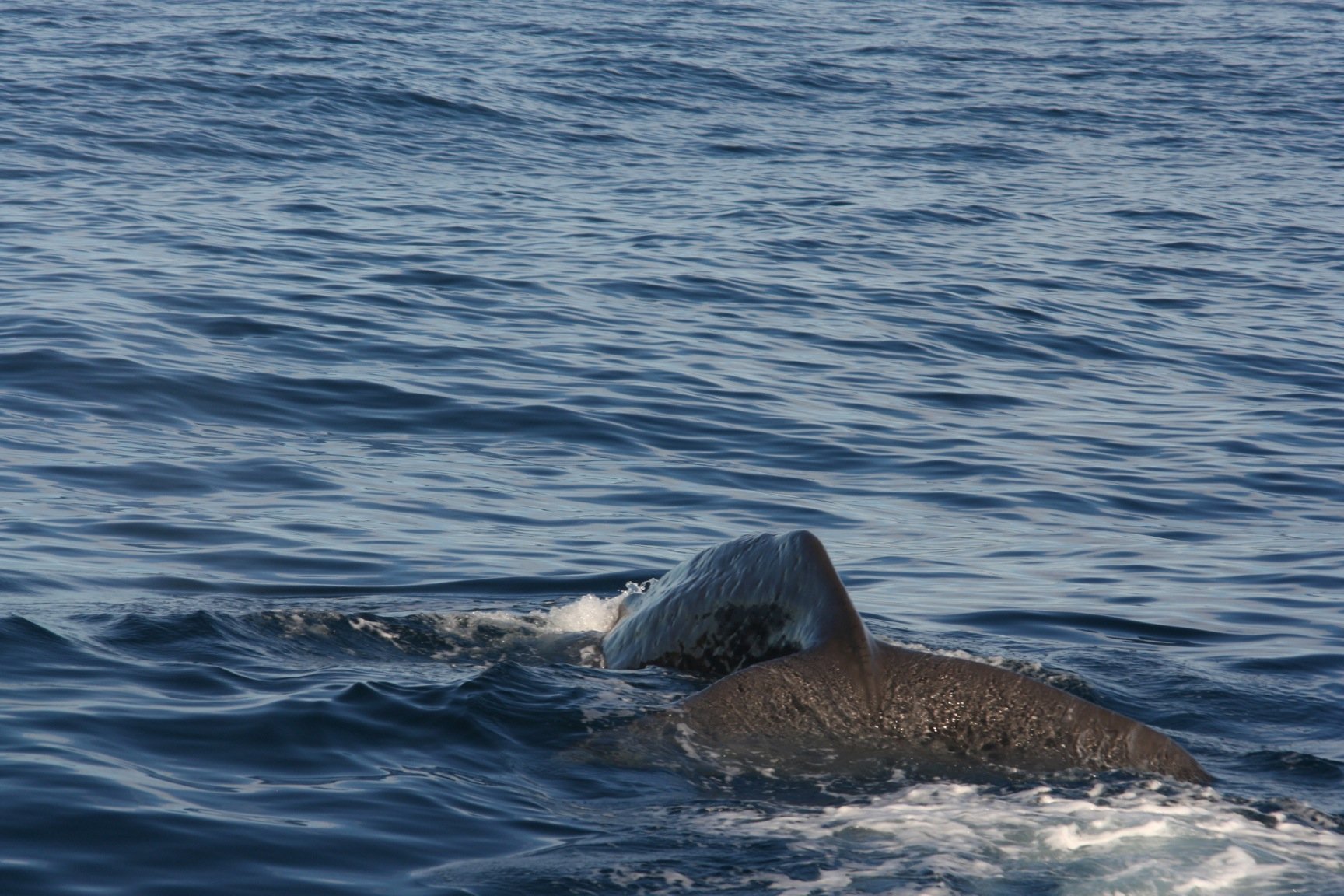
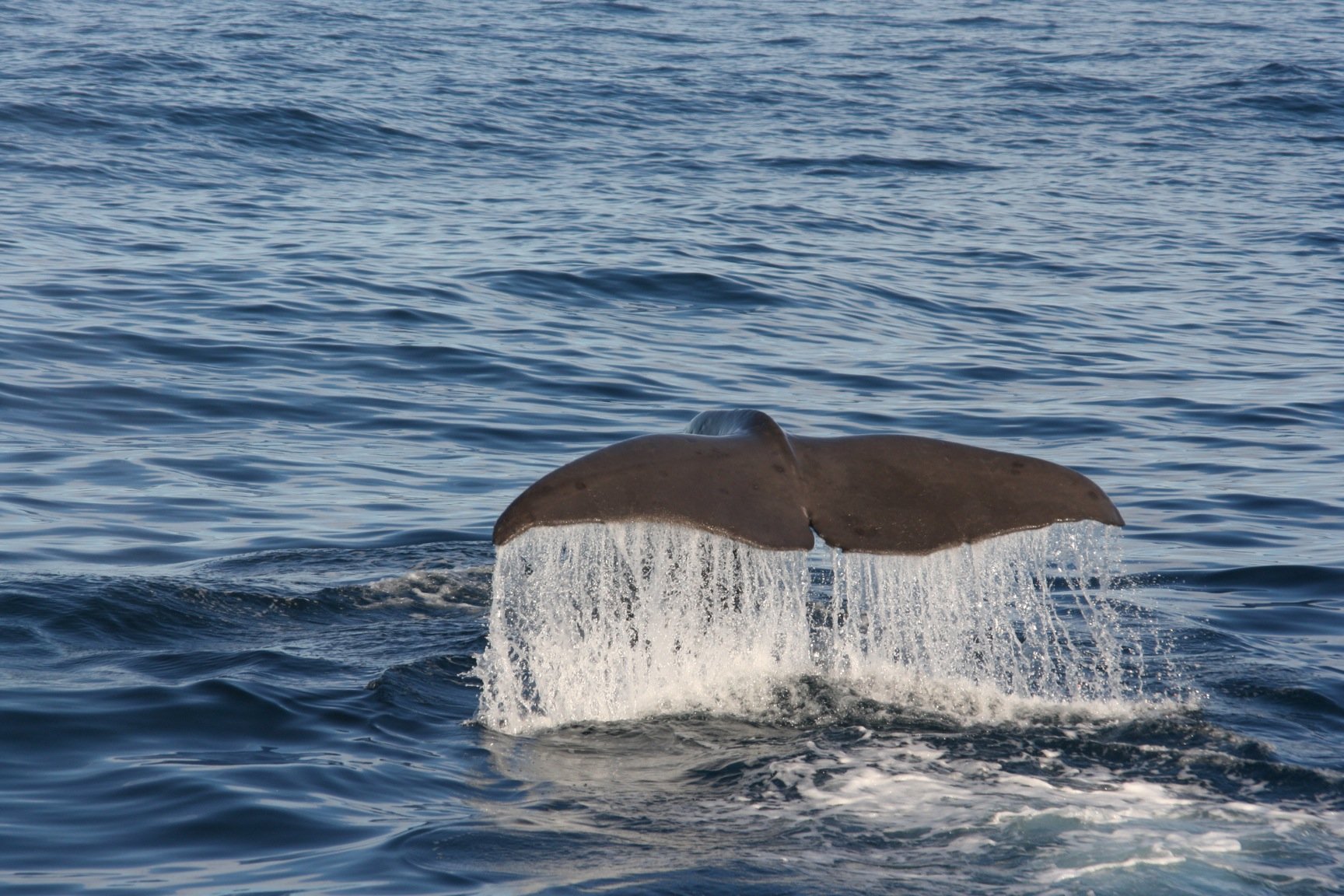

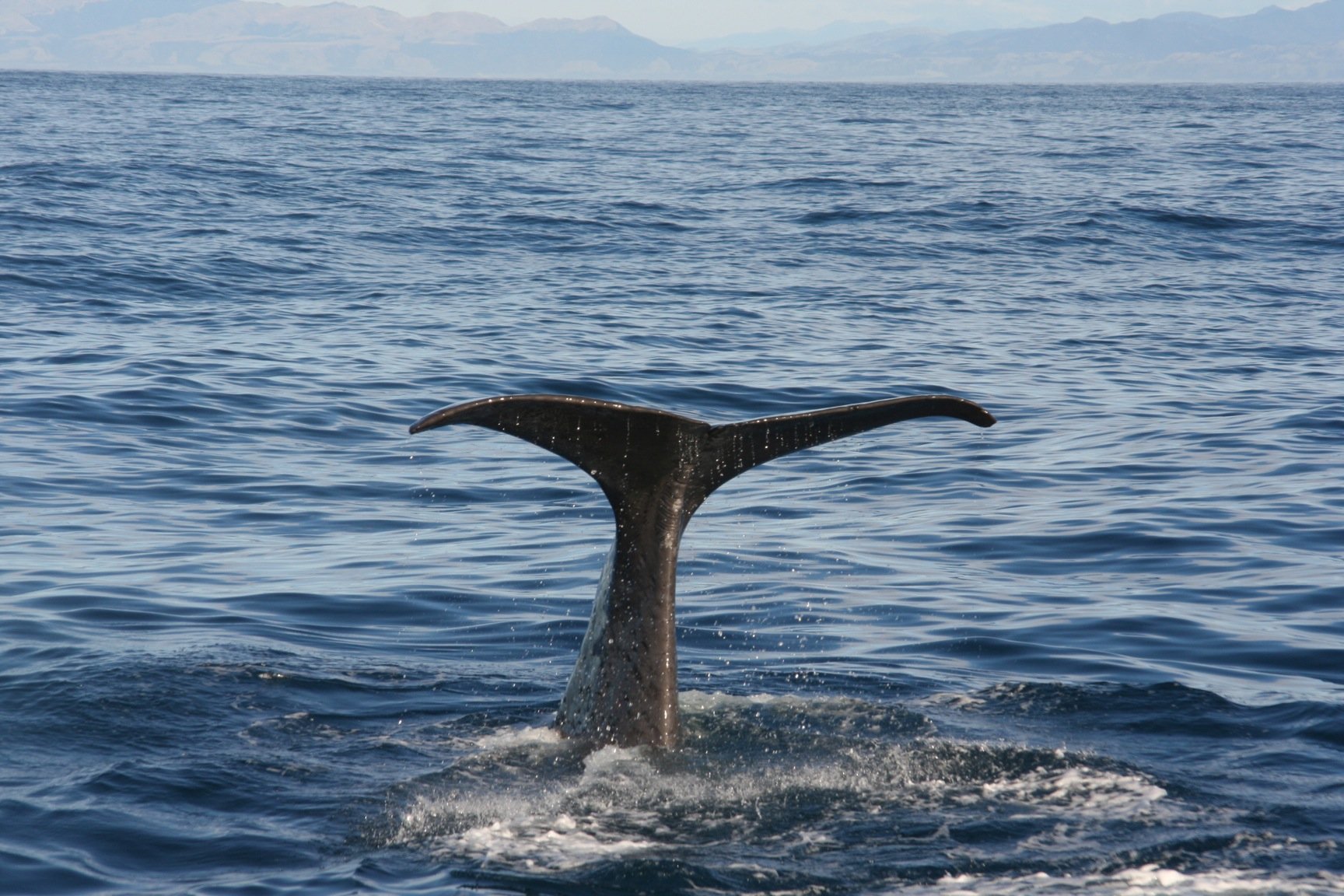
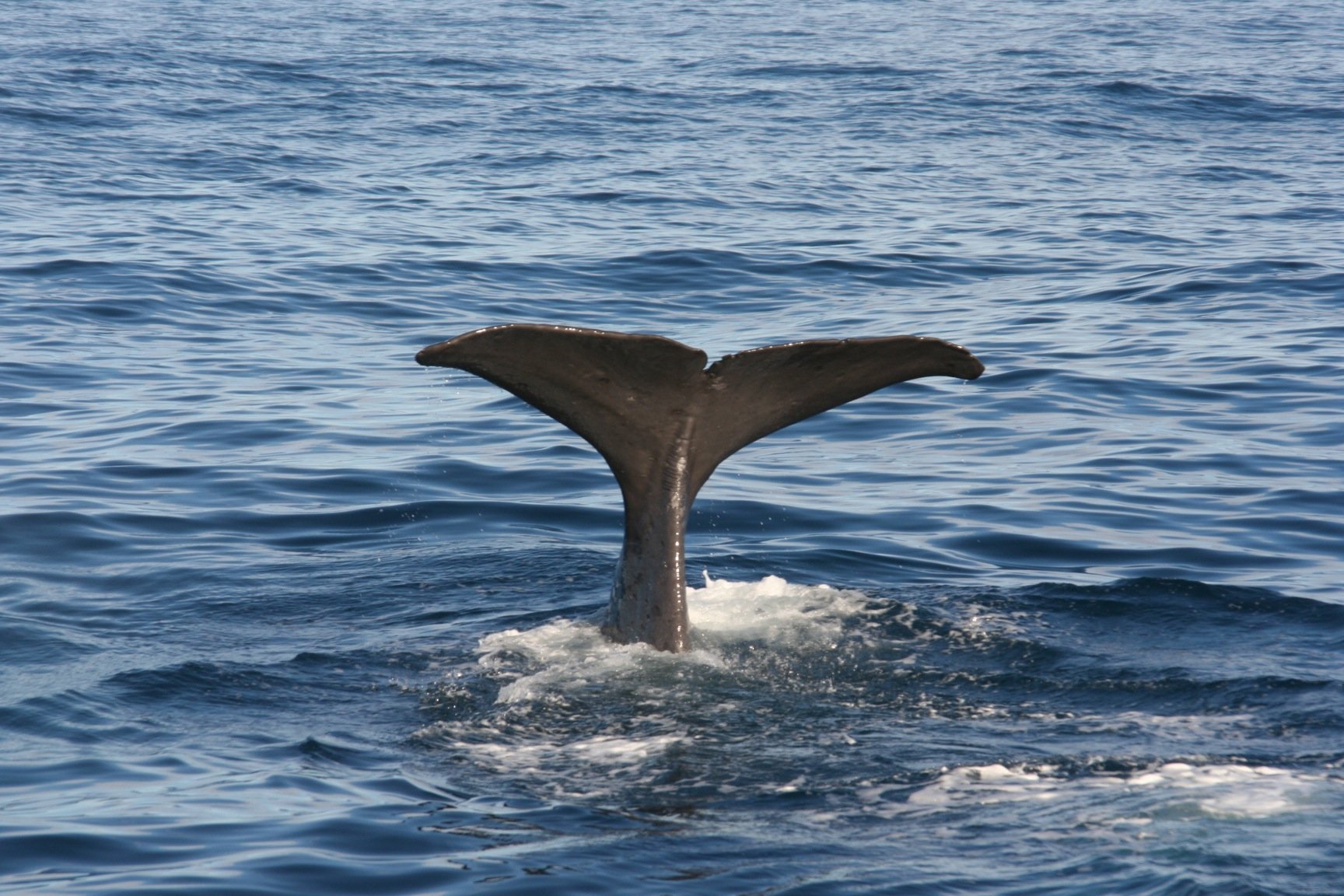
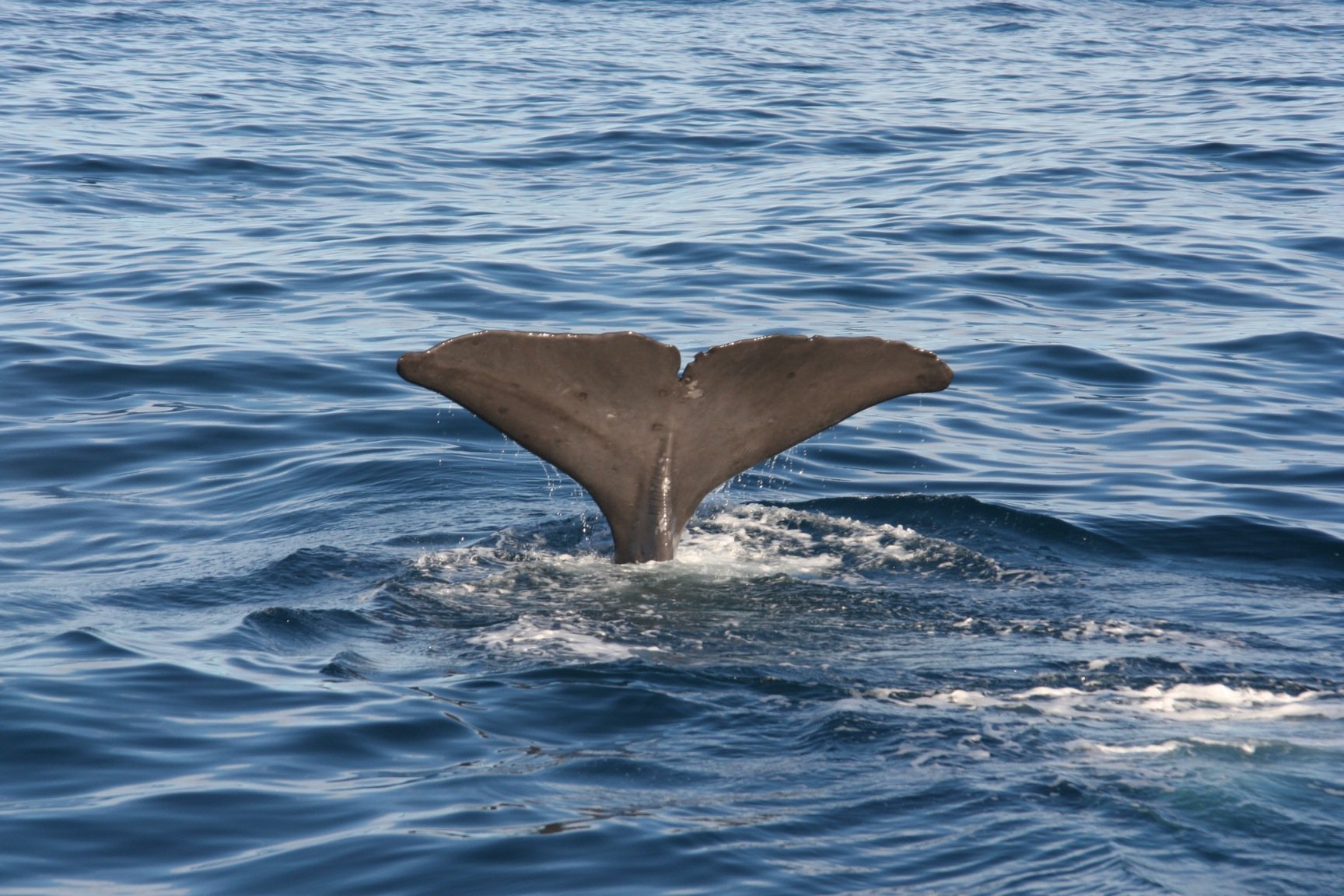











Thanks! You had a good Easter! 🙂